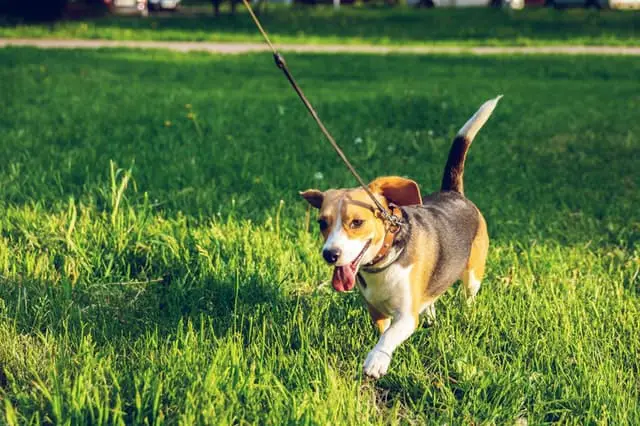
You might think that walking on a leash is innate for a dog, but it is not. Walking on a leash requires training and suitable equipment.
The walks are for dogs a moment of intense happiness! But to prevent it from becoming infernal for the owners, it is better to choose the right dog leash and teach your country not to be afraid of it.
Where can you teach your dog to walk on a leash?
Choose the location wisely so as not to compromise this learning from the start. You can start very well in your apartment, in the form of a game. If you have children, they can take care of it; the dog often accepts the authority of children better when they can assume it.
The game has the advantage of not stressing the animal , but it must be organized. Then go outside. As much as possible, you should avoid going out the first time in very busy or hectic streets. It is true that the visual and auditory stimulation of the animal, from an early age, are fundamental for its future balance, but we must not accumulate the difficulties or associate learning with an unpleasant atmosphere.
Noises from the street might scare them. It should also be “focused” to follow your directions. Passers-by, moved by a puppy, often distract it by calling or stroking it. Plus, they don’t understand that you don’t appreciate their attitude. The quiet streets allow you to avoid these situations.
Then try the busier streets at peak times so that the dog can go out without anxiety at any time of the day. The progression of learning in the intensity of stimulation (noises, passers-by, etc.) must be slow.
How to teach him to walk on a leash?
Always keep the floating leash on the dog’s back: it should never be stretched. This will allow you to exercise small pulls when you want to bring the animal back to you. The dog should walk close to your leg without ever going over it.
It should not turn around you and twist you in the leash, or turn around all the time. Walking on a leash is not a “forced walk” but at the beginning it requires a certain discipline. It is advisable to make the dog walk always on the same side. This allows them to know where to stand in relation to you and not to keep moving from side to side.
You also need to get its attention , as it will be distracted by all the noise in the street (although there are few). Speak to them, follow its name with the order: ” At the foot!” If it does not respect its position and passes you, say to them: ” No! And give the leash a little shake to bring it back to its place.
If it obeys, praise them. If it is dragging behind, use a little pull on the leash to pull them up to you. But do not constantly pull on the leash. So as not to turn this learning into an exercise, teach them these rules during the “ pee walks ”. It has to happen naturally.
You can also tap your thigh to bring the dog next to you at the start. Never give in: don’t end the walk with the puppy in your arms. Drag it gently if necessary. Do not stray too far from the house at first, this will allow you to come back easily in case of severe fatigue!
Go out two or three times a day , always presenting this walk to the puppy as a game.
Educator’s advice
From an early age, the dog must have a friendly and confident relationship with the leash, which it should not feel as a constraint. For the dog, the leash must represent the extension of the hand of its master and therefore constitute a bond of friendship and trust.
If the first approaches turned out to be traumatic, the work would be all the more difficult thereafter: it is therefore absolutely necessary that the puppy sees the leash as a pleasant instrument and not as an enemy, without considering it as a toy.
To help you
To teach your young dog to walk on a leash, you need good accessories. A leash adapted to its breed and its pace, to begin with: brands like Flexi, or Petcomer offer wide ranges, at various prices. The collar or harness are also essential: you can choose a model that suits you from the choices offered by Pecute or Takebest, for example. You don’t have to spend a lot of money to find a suitable model for your puppy.
Mistakes to avoid with your dog’s leash

- pull the puppy that does not want to walk on a leash
- hit the dog with the leash (even for fun)
- leave the leash available to the puppy, allowing them to play with or gnaw on it (would we let him gnaw our arm?)
